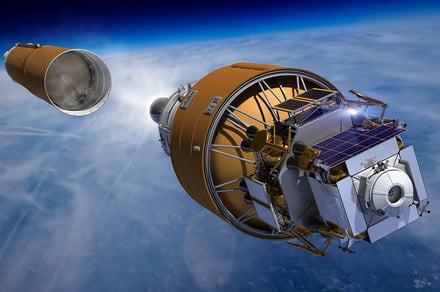Boeing submitted a proposal to NASA for a human lander concept that would deliver astronauts to the moon in the fewest steps possible.
The proposal, which was announced on Tuesday, November 5, is part of NASA’s Artemis program to land astronauts on the moon by 2024. Boeing’s Human Lander System (HLS) is meant to reduce the number of segments that need to be sent into orbit — from 11 mission-critical events to five.
“Using the lift capability of NASA’s Space Launch System (SLS) Block 1B, we have developed a ‘Fewest Steps to the Moon’ approach that minimizes mission complexity, while offering the safest and most direct path to the lunar surface,” said Jim Chilton, senior vice president of Space and Launch for Boeing Defense, Space & Security, in the announcement.
Another critical factor to Boeing’s proposal is that it can carry itself from orbit to landing without an additional transfer stage known as a “space tug.”
The lander’s technologies would be based on the Boeing CST-100 Starliner spacecraft. The Starliner could become the first American-made orbital crew capsule to come down on land and features a design that should make it reusable up to 10 times.
Boeing successfully tested the Starliner crew capsule for the first time on Monday, November 4. The rocket was able to hit 650 mph in only five seconds.
While Boeing is aiming for fewer steps to the moon, SpaceX has similar goals for its moon missions, but also with a focus on getting to the moon the cheapest way. SpaceX CEO Elon Musk recently said that the much-anticipated Starship rocket could only cost $2 million per mission.
In comparison, SpaceX’s Falcon rockets, which are also multi-launch rockets, cost significantly more than Starship. The Falcon 9 rocket would cost roughly $62 million to launch, while the Falcon Heavy rocket is estimated to cost $90 million.
Digital Trends reached out to Boeing to find out how much its HLS proposal would cost, but we haven’t yet received a response.
In 2014, NASA selected SpaceX and Boeing to work with its Commercial Crew Program. NASA tasked the two companies to create spacecraft, rockets, and systems to carry astronauts to the space station for missions.
We also reached out to NASA to comment on Boeing’s most recent proposal, and we’ll update this story once we hear back.

